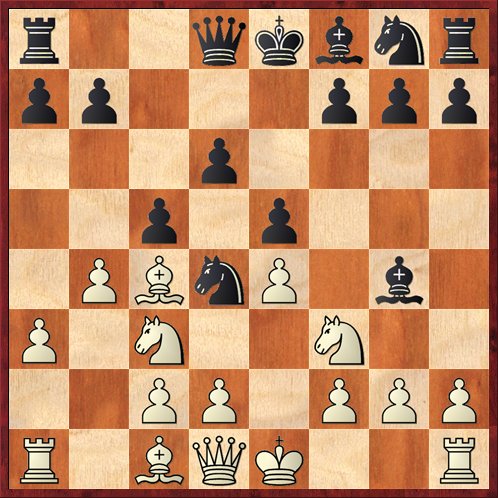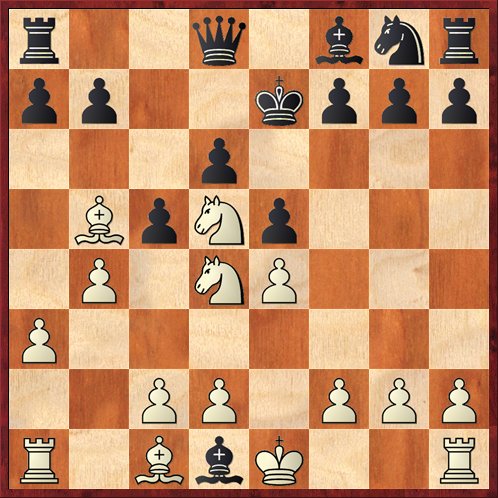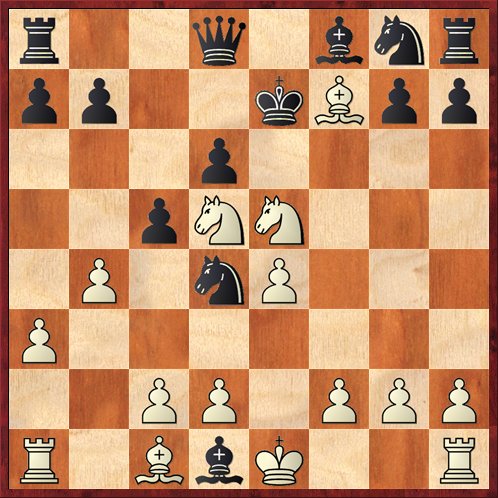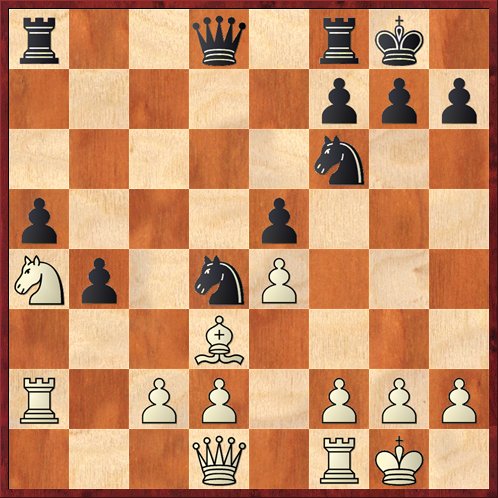Yesterday I played a blitz game against Gjon Feinstein that featured not one but two Légal Mates! One of them was the standard one, the other was a modified version that I had n0t seen before. Both of them remained only in the annotations — they didn’t actually occur on the board. What was odd is that after avoiding the checkmates I actually had a perfectly okay position on the board! I eventually did lose the game, but not because of the opening.
Gjon Feinstein — Dana Mackenzie (Game/7 minutes)
1. Nf3 c5 2. a3 …
I know, I know. Speed chess, messing around, etc. But Gjon is one player who (in my opinion) never messes around, even in a blitz game. When he plays a move he has a reason, and we’ll see what the reason is for this move in a second.
Who would believe, after this beginning, that we are going to see an orgy of tactics in about six moves?
2. … Nc6 3. e4 e5 4. b4!? …
And now we see Gjon’s thinking. It’s a back-door transposition into a Wing Gambit of the Sicilian. Although Roman Dzindzichashvili calls this the “worst opening in chess,” Gjon retains a certain fondness for it.
4. … d6
You could say I chickened out, but I couldn’t see any sensible reason for taking the pawn, aside from the fact that it’s a pawn. Instead, I play a reasonable developing move and I ask White, “What have you accomplished with a3 and b4?” In my opinion, all he has done is waste two tempi.
5. Bc4 Bg4
Continuing in sharp fashion. Of course I checked first to make sure that 6. Bxf7+ doesn’t work.
6. Nc3 …
Gjon also plays provocatively! He said he was trying to lure me into playing Nd4. Of course it would be more sensible for me to play 6. … Nf6, but this is speed chess. So I “fell into” Gjon’s trap.
6. … Nd4!?
 Position after 6. … Nd4. White to move.
Position after 6. … Nd4. White to move.
FEN: r2qkbnr/pp3ppp/3p4/2p1p3/1PBnP1b1/P1N2N2/2PP1PPP/R1BQK2R w KQkq – 0 7
So what’s going on here? Who is trapping whom?
The instant after I played it, I thought, “Oh my god, what a horrible blunder.” The reason is that I saw the answer 7. Nxd4 Bxd1 8. Bb4+ Ke7 9. Nd5 mate! (See diagram.)
 Position after 9. Nd5 mate. (Analysis)
Position after 9. Nd5 mate. (Analysis)
FEN: r2q1bnr/pp2kppp/3p4/1BpNp3/1P1NP3/P7/2PP1PPP/R1BbK2R b KQ – 0 9
I have never seen this slightly transmogrified version of Légal’s Mate before, which is why I missed it in the game. But as it turns out, I had nothing to be afraid of! The reason is that instead of playing 8. … Ke7??, I can give the queen back with 8. … Qd7. Here I somehow hallucinated that I would end up a piece down after 9. Bxd7+ (there is nothing better for White) Kxd7 10. Kxd1 (or Nxd1) cd, but actually material is even and there is nothing wrong with Black’s position. The Queens are off and the center is blocked, so Black’s uncastled king is no problem.
My second surprise came when Gjon (instead of 7. Nxd4) played 7. Nxe5 instead. The reason is obvious: he is going for the original version of Légal’s Mate after 7. … Bxd1?? 8. Bxf7+ Ke7 9. Nd5 mate. (See diagram.)
 Position after 9. Nd5 mate (analysis).
Position after 9. Nd5 mate (analysis).
FEN: r2q1bnr/pp2kBpp/3p4/2pNN3/1P1nP3/P7/2PP1PPP/R1BbK2R b KQ – 0 9
This is a trap that every chess player should know, even though it essentially never happens in actual play. It’s still a great example of perfect piece coordination.
Of course I didn’t fall into this, and the more I looked at it, the more I felt that there was nothing wrong with simply taking the knight. Yes, White wins a pawn in the center, but don’t forget that the pawn on b4 is still hanging. Ordinarily allowing a shot like 7. Nxe5 would have been a fatal mistake, but here I’m not even sure it was a mistake!
So the game continued 7. … de! 8. Qxg4 Nf6 (developing with a tempo) 9. Qd1 cb 10. ab Bxb4 (developing and winning back my material) 11. Ba3 Bxa3 12. Rxa3 O-O 13. O-O a6 14. Bd3 b5 15. Ra2. At this point I made a mistake: 15. … Qd7?, which both misplaced my queen and allowed Gjon to gang up on my a6 and b5 pawns. Much better, in my opinion, would have been 15. … b4 16. Na4 a5.
 Position after 16. … a5 (analysis).
Position after 16. … a5 (analysis).
FEN: r2q1rk1/5ppp/5n2/p3p3/Np1nP3/3B4/R1PP1PPP/3Q1RK1 w – – 0 17
I was reluctant to play this way because I didn’t want to my queenside pawns to become blockaded and static. But that’s crazy for a number of reasons. First, in the game they became static targets on a6 and b5. In this position they are one step farther advanced. The pawn on a5 would be much easier for Black to defend than it was on a6, because White’s bishop is useless. Second, just look at Black’s piece activity compared to White’s. The white bishop on d3 especially is an underachiever.
Of course this type of pawn structure is exactly what White is playing for in the Wing Gambit. However, the premise is that Black’s a- and b-pawns are supposed to be cowering back on the second and third ranks, with White’s heavy pieces bearing down on them on the open files. In this position they are hardly cowering, White’s heavy pieces are slow to get organized, and Black’s minor pieces are distinctly better than White’s. For all those reasons I would be happy to play the Black side again.
So 6. … Nd4, even though it walked into two different Légal’s Mate traps, was apparently a good move!



{ 1 trackback }